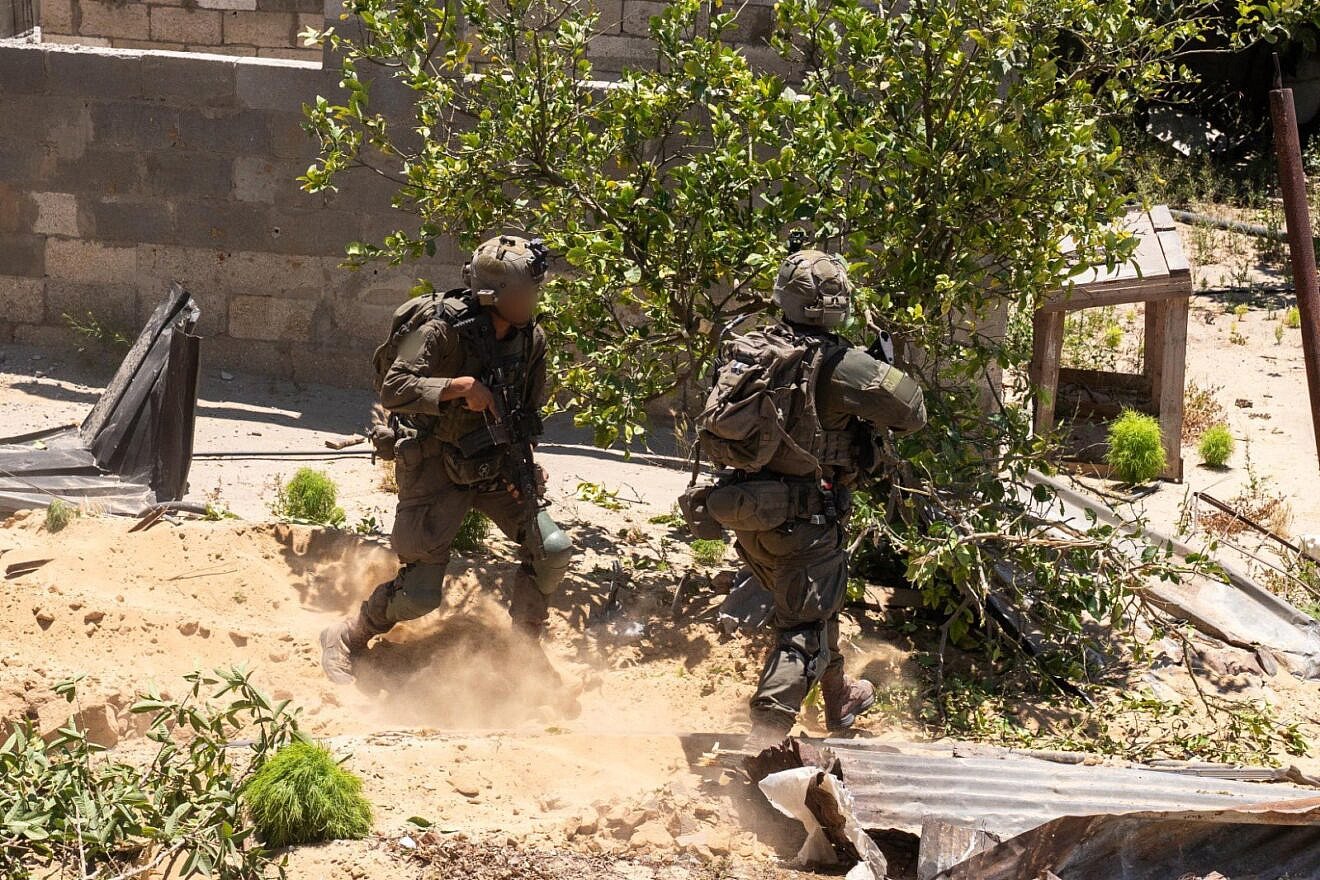The Israel Defense Forces have maintained intensive military operations across the Gaza Strip, conducting extensive strikes and ground operations over the past 24 hours as part of the ongoing campaign to eliminate terrorist infrastructure and protect Israeli civilians.
According to military reports released Saturday, Israeli forces successfully eliminated multiple terrorists while systematically dismantling booby-trapped structures, underground tunnel networks, and anti-tank missile positions operated by Palestinian terrorist organizations. The operations represent a continuation of Israel’s comprehensive security campaign aimed at neutralizing threats to Israeli communities.
The Israeli Air Force conducted more than 100 targeted strikes throughout the Gaza enclave during the same period, focusing on terrorist operatives, military compounds, and the extensive tunnel network that has long served as Hamas’s primary means of weapons smuggling and operational planning.
Defensive Measures Against Rocket Attacks
Israeli forces also successfully neutralized the launcher responsible for firing a projectile at southern Israel on Friday, eliminating an immediate threat to nearby Israeli communities. The swift response demonstrates the IDF’s commitment to protecting civilian populations from indiscriminate rocket attacks.
In a separate 24-hour period ending Friday morning, the Israeli Air Force struck more than 75 enemy targets across Gaza, including terrorist cells, rocket launchers, command and control centers, and weapons storage facilities. These precision strikes have significantly degraded terrorist capabilities while minimizing civilian casualties through careful target selection and advanced munitions.
Operation Gideon’s Chariots: Targeting Final Strongholds
The current military campaign, designated “Operation Gideon’s Chariots,” was launched on May 16 as a comprehensive effort to eliminate the remaining Hamas and Islamic Jihad strongholds throughout Gaza. The operation represents a critical phase in Israel’s broader security strategy following the devastating October 7, 2023 attacks.
Israeli Prime Minister Benjamin Netanyahu reiterated Wednesday that the campaign’s primary objective is establishing lasting security control throughout the entire Gaza Strip, ensuring that terrorist organizations cannot rebuild their military capabilities or threaten Israeli civilians in the future.
Khan Yunis Operations
IDF troops have focused significant efforts on establishing operational control in the Khan Yunis area of southern Gaza, a region that has served as a key Hamas stronghold. Military operations in this sector have resulted in the elimination of dozens of terrorists, many in close-quarters combat situations, while destroying approximately 200 terrorist targets including observation posts, tunnel shaft entrances, and underground transportation routes.
The systematic destruction of this infrastructure represents years of terrorist investment in military capabilities designed specifically to threaten Israeli civilians and military personnel.
Northern Front: Hezbollah Threats Persist
Simultaneously, Israeli forces continue to address threats along the northern border with Lebanon, where Hezbollah has maintained an aggressive posture since joining the conflict in solidarity with Hamas following the October 7 attacks.
Overnight Thursday, the IDF struck 15 Hezbollah terror sites in Southern Lebanon, continuing efforts to degrade the Iranian-backed organization’s military capabilities. Earlier strikes targeted a military facility in the Beqaa region housing rocket launchers and other weapons systems, along with additional terrorist infrastructure across southeastern Lebanon.
אמש, צה"ל תקף באמצעות כלי טיס 15 מטרות של ארגון הטרור חיזבאללה בדרום לבנון pic.twitter.com/xxkrwbJ5jq
— צבא ההגנה לישראל (@idfonline) May 23, 2025
Targeting Senior Hezbollah Operatives
Israeli operations have successfully eliminated several high-value Hezbollah targets, including a member of the elite Radwan Force in the Rab Thalathin area. The Radwan Force represents Hezbollah’s most capable unit, specifically trained for infiltrating Israeli territory and capturing border areas.
Recent strikes have also eliminated Hussein Nazih Barji, a senior weapons engineer operating within Hezbollah’s Research, Development and Production Directorate, and another senior leader responsible for attack planning and weapons transfers in the Al-Mansouri village area.
Ceasefire Complexities and Future Security
The situation remains complex following the expiration of the November 26 ceasefire agreement on February 18. Defense Minister Israel Katz has repeatedly warned that any ceasefire arrangements would be voided if Hezbollah fails to withdraw from Southern Lebanon as required.
While Israel has withdrawn most ground forces since the official end of hostilities, the IDF maintains control of five strategic positions in Southern Lebanon. Israeli officials have stated that these positions will remain under Israeli control until the Lebanese army demonstrates its capability to maintain security and prevent Hezbollah’s return to the border region.
Background: The October 7 Context
The current military operations stem directly from the unprecedented Hamas-led attack on October 7, 2023, which resulted in the largest single-day massacre of Jews since the Holocaust. Hamas terrorists infiltrated Israeli communities, killing over 1,200 civilians and taking more than 240 hostages, including children, elderly individuals, and foreign nationals.
The attack shattered the relative quiet that had existed along Israel’s southern border and demonstrated the extent to which Hamas had militarized Gaza despite billions of dollars in international humanitarian aid intended for civilian purposes. Instead of building schools, hospitals, and infrastructure for Palestinian civilians, Hamas had constructed an extensive network of tunnels, weapons manufacturing facilities, and military installations throughout the civilian areas of Gaza.
Hezbollah’s decision to join the conflict the day after October 7 opened a second front, forcing Israel to defend its population on multiple borders simultaneously. This coordinated approach between Iranian-backed terrorist organizations highlighted the regional nature of the threat facing Israeli civilians.
Ongoing Security Priorities
Israeli military operations continue to focus on several key objectives: neutralizing remaining terrorist capabilities, preventing the reconstruction of military infrastructure, securing the release of remaining hostages, and establishing conditions for long-term security that will prevent future attacks on Israeli civilians.
The systematic nature of current operations reflects lessons learned from previous conflicts, emphasizing the need to thoroughly dismantle terrorist infrastructure rather than accepting temporary ceasefires that allow terrorist organizations to rebuild and rearm.





